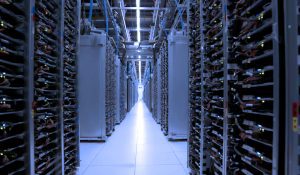As multi-tenant data center (MTDC) colocation providers face increasing competition, they must meet the evolving demands and expectations of their tenants. Tenants today are moving beyond the fundamentals of maintaining availability and providing sufficient network bandwidth and fast connections to the cloud. They are also prioritizing security, sustainability, and transparency. Data Center Infrastructure Management (DCIM) software has evolved to become a tool to address many of these needs. Traditionally, colocation vendors have used DCIM primarily for capacity management and help in avoiding downtime. But modern DCIM tools enable a firm to stand out from its competitors. Recently, I published a new White Paper titled, “How Modern DCIM Helps Multi-tenant Colocation Data Centers Be More Competitive”, which makes a comprehensive case for how it does all this using practical examples. The paper also explains how to avoid common pitfalls of implementing and maintaining the software to better ensure its value is realized.

1. Ensuring Resiliency with DCIM monitoring and planning functions
Resiliency is such a critical aspect of data center operations that maintaining power and cooling availability is basically table stakes for providers. DCIM’s monitoring and device management functions play a key role in improving the availability and resiliency of physical infrastructure systems. By monitoring power, cooling, and environmental conditions in real-time, DCIM enables proactive identification of potential issues that could lead to system downtime if left ignored. DCIM software provides remote visibility and early warning in conjunction with device and environmental sensors and cameras to keep operators informed of changing status and environmental conditions in the IT space.
Additionally, DCIM’s planning and modeling functions help ensure resiliency by reducing the risk of human error during maintenance activities and facilitating informed decision-making through simulation. By creating, in effect, a “digital twin” of your portfolio of data centers, this DCIM function simulates adds, moves, and changes so that operators understand the potential impacts before real action is taken. By first performing actions virtually, the risk of an unplanned interruption in IT service during maintenance is minimized.
2. Enhancing Security with DCIM
Security and compliance are top concerns for MTDC providers and tenants alike. Modern DCIM software addresses security risks by ensuring that all connected power and cooling infrastructure devices are up-to-date with the latest firmware and software patches. Operators can automate updates, and quickly run assessment reports to determine which devices have compromised network security settings and/or out of date firmware. This capability greatly simplifies the management of your infrastructure devices. Modern DCIM can also help with physical security by communicating with security cameras and environmental monitoring devices, like Schneider Electric’s NetBotz appliance and its associated security sensors, to give operators and tenants visibility on who might be nearby or accessing equipment in the IT space.
3. Helping Achieve Environmental Sustainability Goals
In response to the increasing focus on environmental sustainability, MTDC providers are under pressure to track, measure, report, and reduce their carbon emissions. And tenants, of course, want to know the environmental impact of their use of colocation services. Modern DCIM solutions are beginning to offer sustainability metric data gathering, calculation, and reporting capabilities that track metrics such as power usage effectiveness (PUE), total energy consumption, Scope 2 greenhouse gas (GHG) emissions, and waste across an entire portfolio of sites.
Beyond metrics and reporting, providers can also leverage DCIM to reduce Scope 2 emissions. Modern DCIM enables this by optimizing space, power, and cooling resources to reduce overprovisioning and energy losses that contribute to carbon emissions. DCIM platforms also offer tools to design energy-efficient floor layouts, utilize computational fluid dynamics (CFD) analysis for cooling optimization, and leverage AI-based optimization to regulate cooling units based on actual demand.
4. Increasing Transparency
The tenant digital experience, or client portal, has become a key differentiator for providers. This digital experience is a vehicle for creating transparency between supplier and tenant, and an essential step towards building a relationship based on trust. Optimized for colocation data centers, modern DCIM software provides a portal for tenants to view and monitor their assets and the resources they consume in real time.
Providers can enable their customers to have a current and historical view of the IT load, power, cooling, and space capacities, as well as energy consumption. Tenants can view all their monitored devices and also drill down into rooms, cages, and racks, while also being able to view environmental data (i.e., temp and humidity) and security cameras. Tenants can edit and track changes to their rack inventories by adding, moving, editing, or deleting equipment in racks. Providers maintain full control over whether a tenant has access and what they have access to.
5. Improving Operational Efficiency
When well implemented, DCIM reduces the time, effort, and knowledge needed to manage data center infrastructure, which should free up staff to focus on other business critical activities. These labor efficiency gains can translate to a competitive advantage. The new white paper mentioned earlier lists many examples to show how modern DCIM improves operational efficiency. Newer tools optimized for colocation providers provide a 2D IT space floor map overlay showing the commercial status of racks and floor space. This overlay map shows a breakdown by tenant, what space is reserved for future tenants, and what is available to sell (as well as showing power/cooling capacity, network ports for a given zone, etc.) This gives the provider improved visibility to data center assets and capacity in real time, yielding sales enablement and change management efficiency benefits.
To remain competitive, MTDC colocation providers can utilize modern DCIM software to go well beyond basic availability and capacity management benefits. Newer DCIM software, like Schneider Electric’s EcoStruxure IT, offers a comprehensive solution to meet tenant expectations and enhance data center operations. By leveraging well-implemented and maintained modern DCIM software, providers can improve resiliency, strengthen security measures, drive environmental sustainability, and optimize operational efficiency. Embracing these solutions enables providers to offer transparency, meet evolving tenant demands, and position themselves as leaders in the market.



